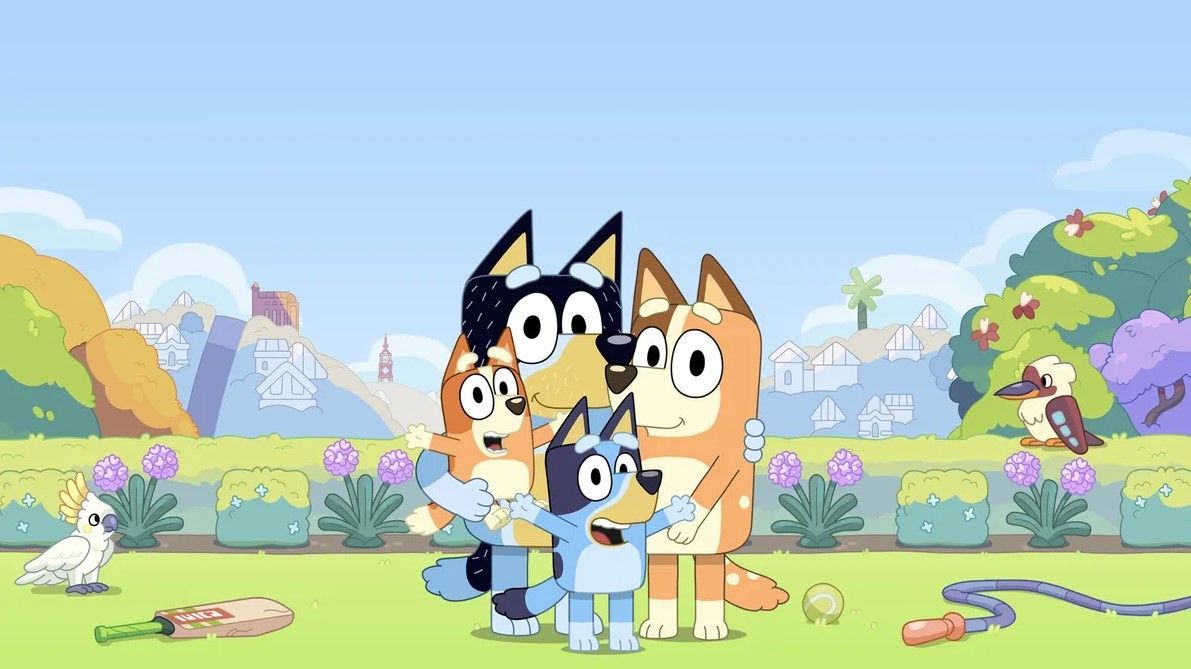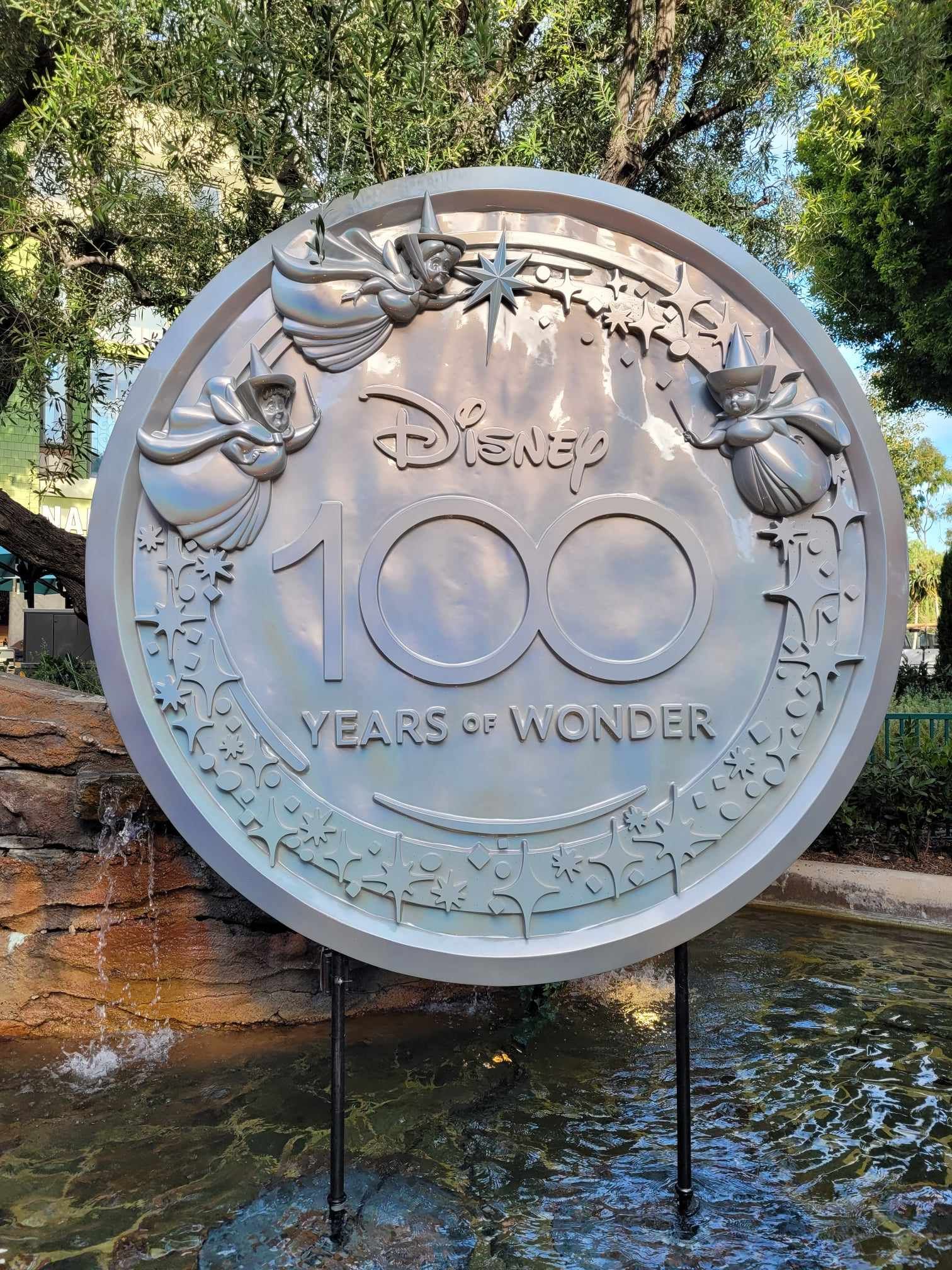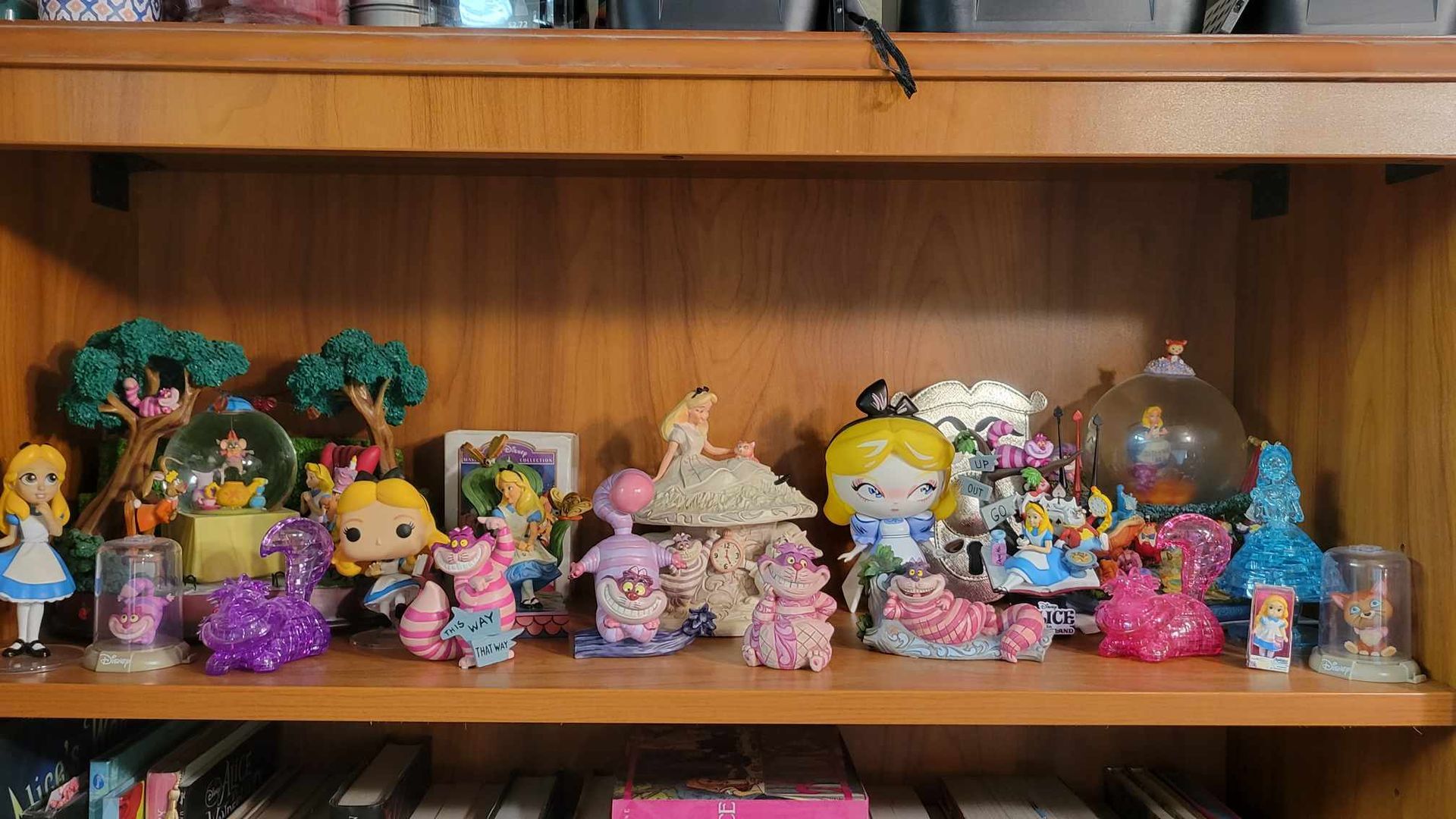Craig D. Barton is a creative consultant, editor, and writer, having written for and consulted on multiple Disney Editions books and various other projects. Besides being a self-described "DisNerd," Craig is an advocate for all arts, loves travel, movies, making his own eclectic music playlists, and, most of all, spending time with his family. Craig currently resides in Avondale, AZ with his lovely wife, quirky daughter, and neurotic yet lovable dog.
1928 - A Story of Mice and Men, As Told by Walt Disney
by Walt Disney, notes and edits by Craig D. Barton
"The Walt Disney Company: 100 Years in 100 Weeks," is the brainchild of Craig D. Barton, presenting weekly posts on the history of the Walt Disney Company. Each post will cover a specific year in Disney's history, featuring essays, shared articles, guest authors, and yearly timelines, all leading up to the company's 100th Anniversary on October 16, 2023. Previous posts in the series can be viewed here..
Be sure to join us every Friday for the newest installment of "The Walt Disney Company: 100 Years in 100 Weeks!"
With the success of Oswald the Lucky Rabbit, Walt Disney entered 1928 feeling rather confident about a contract extension for more shorts. A trip to New York, however, proved otherwise - Charle's Mintz had managed to go behind Walt's back to hire away almost all of his staff (Ub Iwerks had warned Walt of this being a possibility, but he himself remained loyal to the Disney brothers and the studio), and offered Walt a cut in pay for product delivered instead. What was soon to follow has become the stuff of legend within the Disney company itself. Although not in any way, shape, or form a complete detail of what happened during or after those fateful New York meetings, I felt it best to let Walt Disney tell the story himself this week. What follows is a compilation of quotes and interviews with Walt, edited together to tell the tale of the creation of a legend. While the story may be pieced together from multiple sources, I chose not to insert any of my own words, and instead, let Walt do the talking for himself.
With that being said, take it away, Walt!
Mickey Mouse, to me, is the symbol of independence. He was a means to an end. I had been doing a rabbit. It was called “Oswald the Rabbit”’ I was contracting with a middleman (Charles Mintz) for my films and they were being released through Universal. And he was a rather unscrupulous character. He thought he could cut in and move in a little better. He had a right to the character. He took my staff behind my back. When I went back to negotiate the new deal he said, “You're gonna have to do 'em cheaper than you’re doin 'em, because I think I can do ‘em cheaper.” Then he told me, “I have your staff.” He thought he had me across the barrel, and I just walked on him. I said, “Well, you can take the staff." That's when I learned my lesson - from that time on, no middle man.
So I had to get a new character.
I was coming back after this meeting in New York, and Mrs. Disney was with me on the train. In those days, you know, three days from New York, and I said, “We’ve got to get a new character.” I’d fooled around a lot with little mice, and they were always cute characters, and they hadn’t been overdone in the pictures field—they’d been used, but never featured. So it was a mouse. And then the name came. I had Mortimer first and my wife shook her head and then I tried Mickey and she shook her head the other way and that was it. She was right. I like the name Mickey. Mickey has a sort of a… you feel you can be friendly with anyone named Mickey. He was the first cartoon character to express personality and to be constantly kept in character. I thought of him from the first as a distinct individual, not just a cartoon type or symbol going through comedy routine.
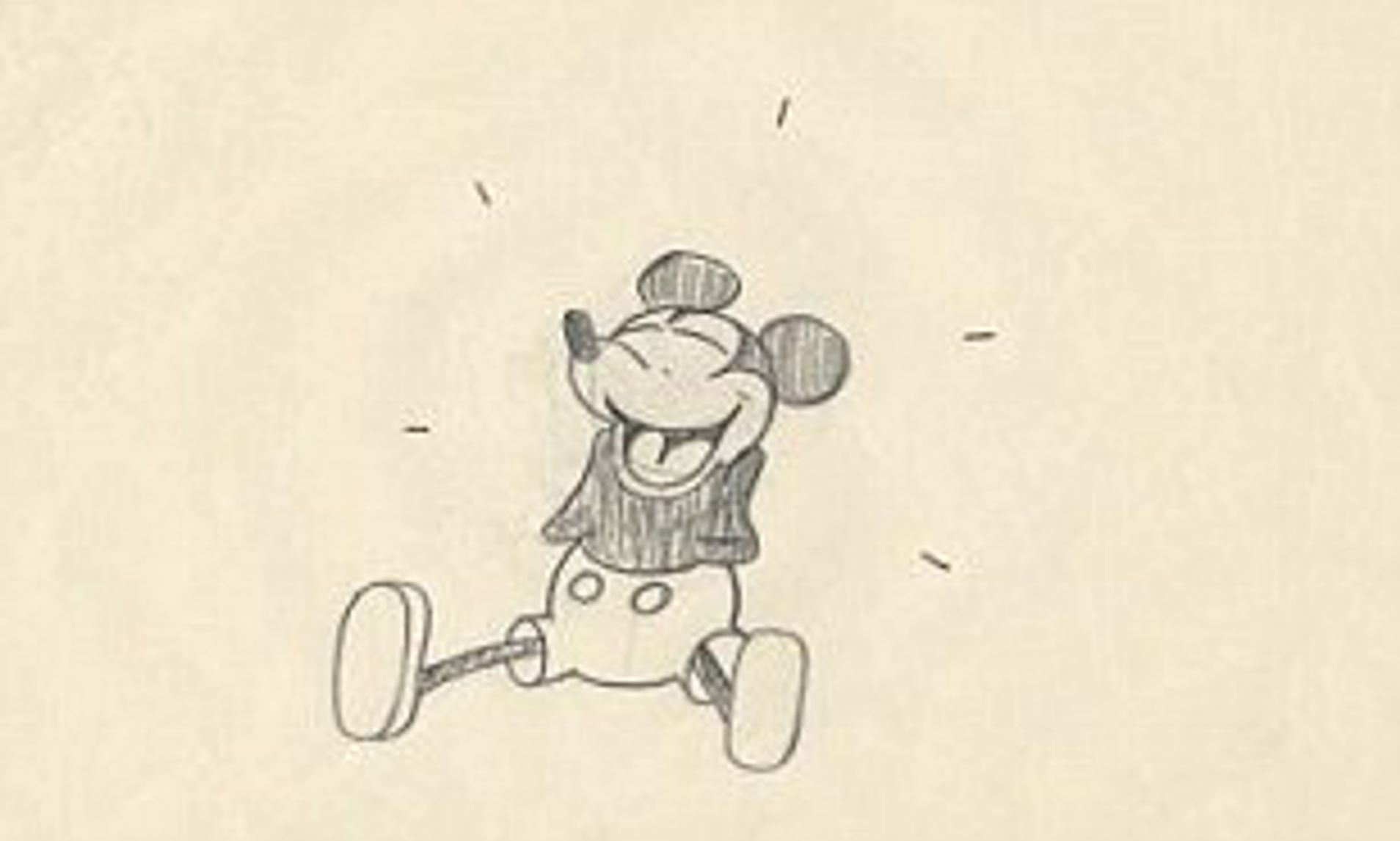
Original Ub Iwerks Drawing of Mickey Mouse, 1928
I wrote Ub and Roy and told them, “I think it would be best to forget all about Universal and the lousy Oswalds. I’m not going to even think about Oswald. The hell with them. If we put Mickey over, Oswald will be a has-been. Let Charlie hang himself. We can lick them all with quality. Let’s have some really new gags.” I kept him away from stock symbols and situations. We exposed him in close-ups. Instead of speeding the cartoons, as was then the fashion, we were not afraid to slow down the tempo and let Mickey emote. We allowed audiences to get acquainted with him. To recognize him as a personage, motivated by character instead of situations.
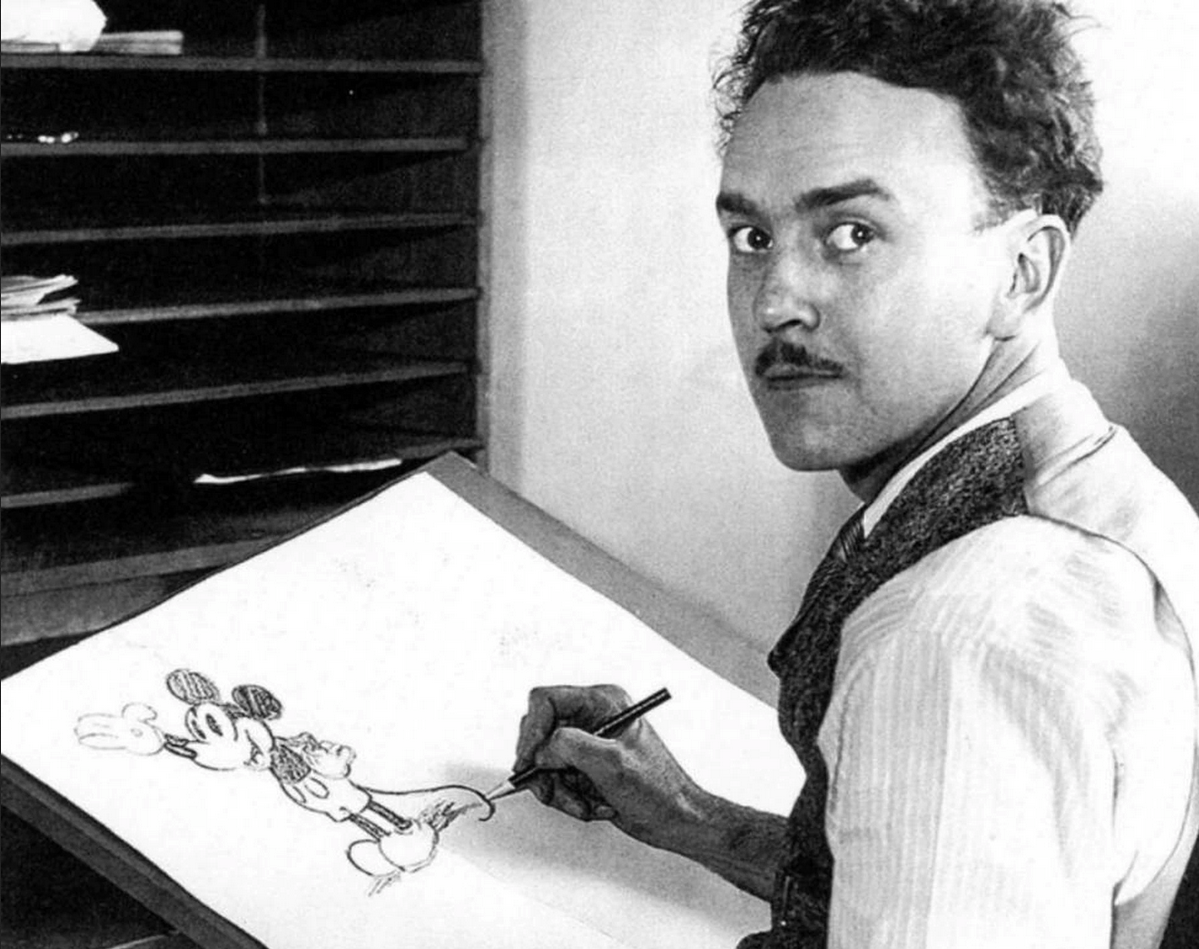
Ub Iwerks, often referred to as "The Hand Behind the Mouse."
At first, it looked like he was going to have a harder time crashing show business than I had. Nobody wanted Mickey. Then, sound on film panicked the industry as Mickey Mouse entered our lives. Quite consciously, I had been preparing Mickey and his screen pals for the advent of sound. I'd made quite a few silent pictures prior to Steamboat Willie. It may seem a curious thing that even those in early films with their explanatory balloons, I had thought of them in terms of sound and speech and dreamed of the day when the voice would be synchronized with the silent action. But I felt sure it was coming. Our tempo and rhythm and general animation technique were already being adjusted so that sound could fit in readily when it came.
I ran into a fellow who had what they called at that time a sort of an “outlaw” sound equipment - it was not, properly licensed say by RCA. He had his own; he claimed he had patents and they claimed they were no good. The fellow was Pat Powers/ His equipment was called Cinephone. He just took me in with open arms, ‘Sure, you do it.” And I said, “Well, I wanna, I got this all worked out- ” “Ohh, I’ll help you on that, I’ll get you just the orchestra leader.”
Of course, sound had a very considerable effect on our treatment of Mickey Mouse. It gave his character a new dimension. It rounded him into complete life-likeness. And it carried us into a new phase of his development.
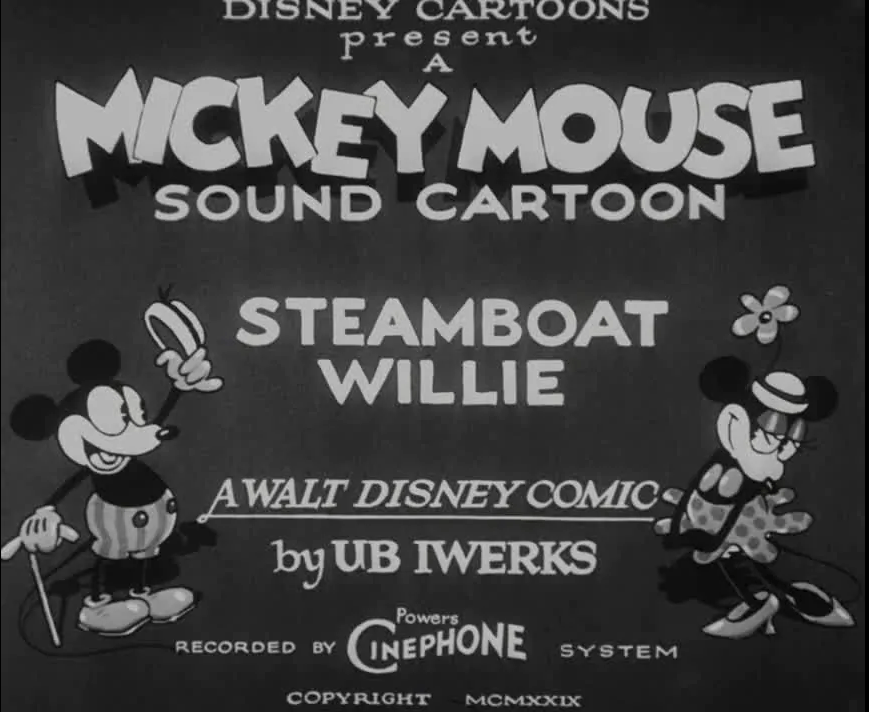
His first actual screen appearance was at the old Colony Theater in New York in Steamboat Willie with its sound effects and cautious speech. A great exhibitor took a chance on Mickey. He was Harry Reichenbach, who managed the Old Colony Theatre on Broadway. We didn't yet have a release for Mickey, but Harry wanted to book him in the Colony regardless. At the time, we were in desperate need for $500. To put it briefly, everything owned by Roy and me was mortgaged to the hilt. So I asked Harry for $500 for exhibiting the first Mickey Mouse one week. I knew that the price was pretty steep. So did Harry. But fortunately for us, he said, "Let's compromise. I'll give you $250 a week—and run the cartoon for two weeks."
Mickey was a means to an end. He popped out of my mind onto a drawing pad twenty years ago on a train ride from Manhattan to Hollywood at a time when the business fortunes of my brother Roy and myself were at lowest ebb and disaster seemed right around the corner. Born of necessity, the little fellow literally freed us of immediate worry. He provided the means for expanding our organization to its present dimensions and for extending the medium of cartoon animation toward new entertainment levels.
I often find myself surprised at what has been said about our redoubtable little Mickey who was never really a mouse nor yet wholly a man, although always recognizably human, I hope. The psychoanalysts have probed him. Wise men of critical inclination have pondered him. Columnists have kidded him. Admirers have saluted him in extraordinary terms. The League of Nations gave him a special medal as a symbol of international good will…But all we ever intended for him or expected of him was that he should continue to make people everywhere chuckle with him and at him. We didn’t burden him with any social symbolism, we made him no mouthpiece for frustrations or harsh satire. Mickey was simply a little personality assigned to the purposes of laughter.
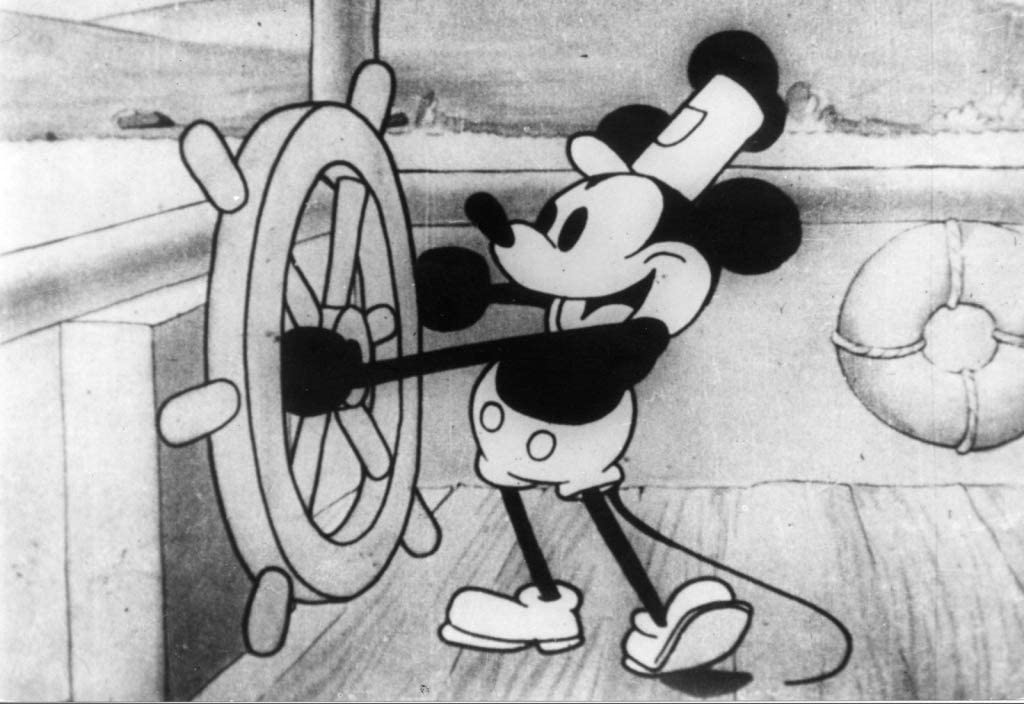
Of course, I hope we never lose sight of one thing – It was all started by a mouse.
1928
- Walt loses the rights to Oswald along with almost all staff.
- “Mickey Legend” is born with tale of train ride, Lillian’s suggestion, Ub Iwerks’ animation
- Ub develops the first Mickey short in secret (staff was still finishing up "Oswald" shorts in studio) - Lillian and Edna Disney assist with ink & paint of "Plane Crazy" in Walt's garage.
- Walt brings in Cinephone equipment at urging of Pat Powers in order to develop the first sound cartoon.
- Steamboat Willie is released at NY Colony Theater on November 18, marking the first appearance of Mickey and Minnie Mouse along with the return of Pete the Cat.
- Steamboat Willie is also first cartoon released with synchronized sound.
Oswald the Lucky Rabbit Releases in 1928 (Last Oswald Releases for Walt Disney Studio):
Harem Scarem - January 9, 1928
Neck 'n' Neck - January 23, 1928
The Ol' Swimmin' Hole - February 6, 1928
Africa Before Dark - February 20, 1928
Rival Romeos - March 5, 1928
Bright Lights - March 19, 1928
Sagebrush Sadie - April 1, 1928
Ride 'Em Plowboy - April 15, 1928
Ozzie of the Mounted - April 30, 1928
Hungry Hoboes - May 14, 1928
Oh, What a Knight - May 28, 1928
Poor Papa - June 11, 1928
The Fox Chase - June 25, 1928
Tall Timber - July 9, 1928
Sleigh Bells - July 23, 1928
High Up - August 6, 1928
Hot Dogs - August 20, 1928
The Sky Scrapper - September 3, 1928
Mickey Mouse Releases 1928:
Steamboat Willie - November 18, 1928
The Gallopin’ Gaucho - December 30, 1928
*"The Walt Disney Company: 100 Years in 100 Weeks" is a project conceived by Craig D. Barton and presented by Communerdy. It is in no way affiliated with The Walt Disney Company, and any opinions presented within its content are that of the author(s). For more updates, follow us on https://www.instagram.com/disney100in100/ .


